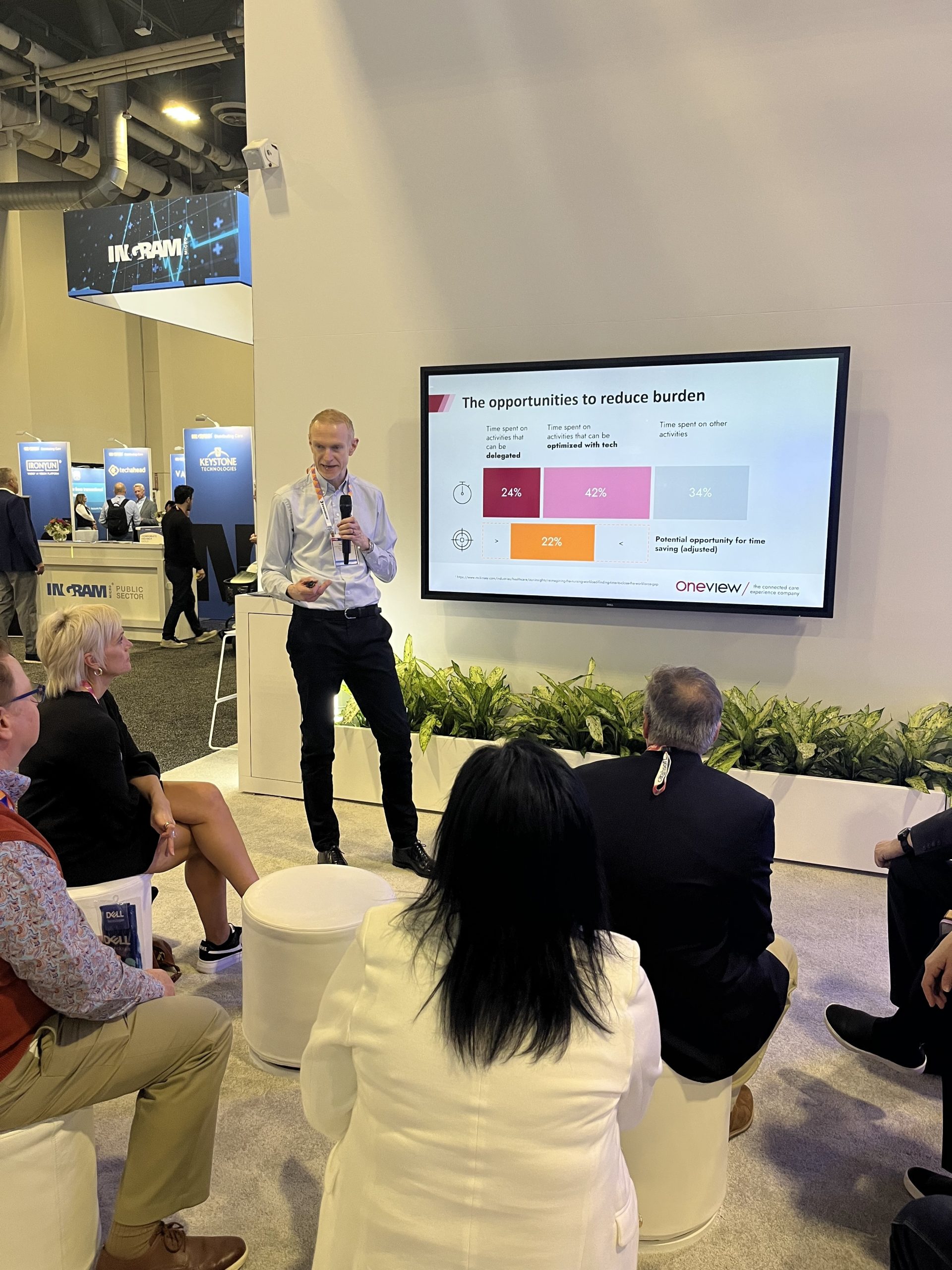During Enterprise Ireland’s North America Healthcare Forum held recently in Dublin, Northwell Health’s CEO Michael Dowling said healthcare technology isn’t behind the times, but its consumer focus is. Oneview’s founder, Mark McCloskey, was there – enthusiastically nodding in agreement.
Healthcare leaders are working so hard to shift their organizations’ mindset from patient-oriented to consumer-oriented. At first glance, the two sound the same. After all, patients are healthcare consumers. But there’s a difference in thinking. Patients are no longer blindly taking instruction from the “bosses” of healthcare (doctors and clinicians). Instead, they’re becoming true, involved consumers who are personally, financially and physically responsible for and in control of their health.
A critical piece of becoming consumer-oriented is maximizing the opportunities for patient self-service. When patients have a touchscreen that lets them control their environment, learn about their conditions, direct their service requests and order their own meals, they are empowered and can save their providers time.
Many patients and caregivers are ready to take on this new role – in fact, many are demanding it. But there’s a caveat: They want to do it in a way they’re used to. They want a simple interface that provides the empowering experience they’ve grown used to with smartphones.
Remember, it’s not the technology that’s behind the times. Health systems have spent millions on dietary systems, EHRs, building management systems, real-time location systems and more. Those are worthy investments. But they aren’t reaching patients in a consumer-friendly way.
Right now, each system is disconnected and siloed. Smartphones have more value than merely replacing other devices. They’re valuable because they connect those capabilities. Similarly, a common platform that links all these capabilities can unlock value in the systems hospitals use every day.
Research by Gartner shows that many healthcare providers aren’t realizing anything close to the full potential of their IT investments. And chief information officers know it: A related Gartner survey found that 80 percent of CIOs said their electronic health records were not delivering the expected return on investment. Easier access through tablets and large displays boosts adoption, and a common interface provides interoperability. Unifying these systems lets them complement each other and work together in new ways.
Ultimately, unifying these systems using a digital patient experience and care technology, furthers the top business imperative in any health system transforming itself to cater to greater consumerism – strengthening the patient relationship. With more of their own money on the line, patients want a long-term partner to improve their health and wellness. Building customer loyalty, then, is good for patients’ health, and for health systems’ financial future.
Are you nodding in agreement? To learn more about how Oneview’s patient experience platform can build customer loyalty, please visit our website, or contact me directly at any time.



